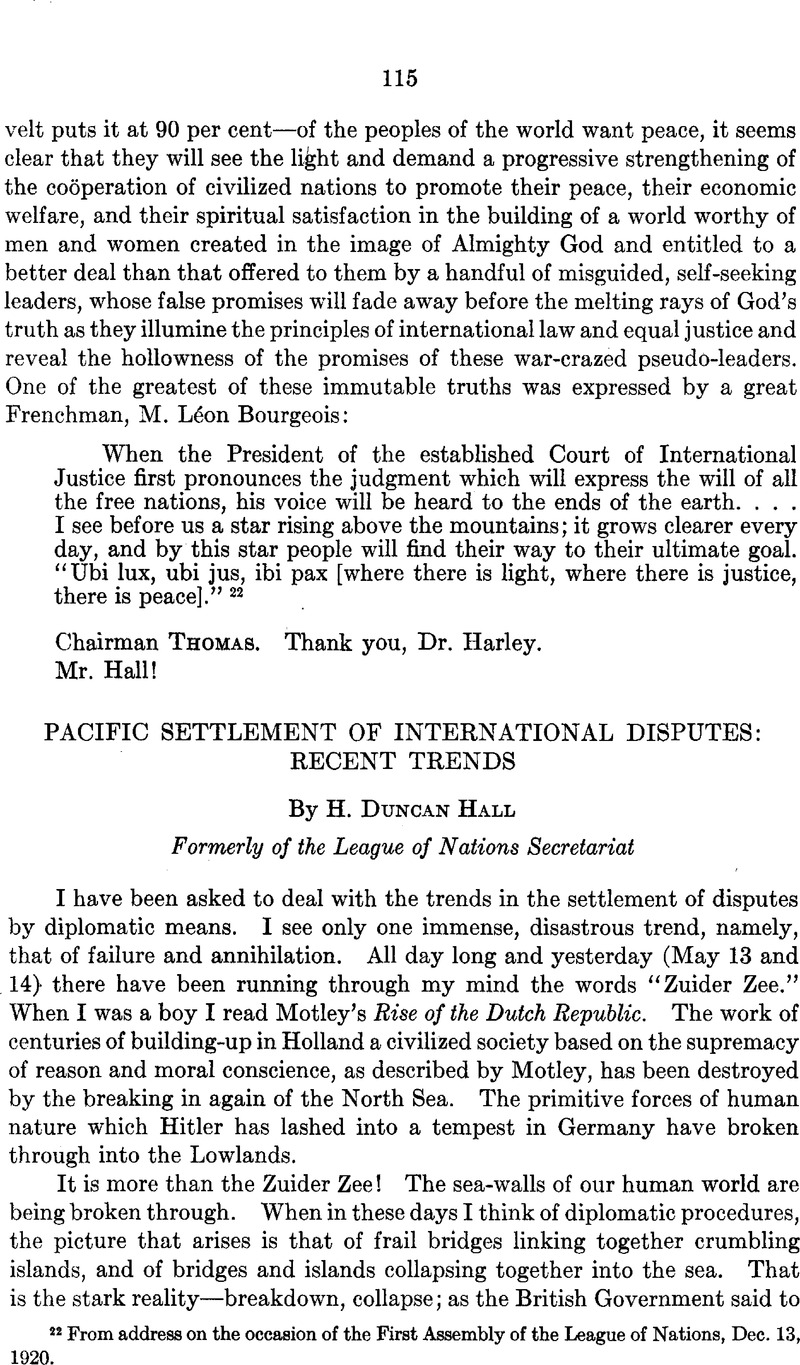Article contents
Pacific Settlement of International Disputes: Recent Trends
Published online by Cambridge University Press: 27 February 2017
Abstract

- Type
- Fourth Session
- Information
- Proceedings of the American Society of International Law at its annual meeting (1921-1969) , Volume 34 , 1940 , pp. 115 - 124
- Copyright
- Copyright © American Society of International Law 1940
References
1 Letter of the British Government to the Secretary-General of the League of Nations, Sept. 7, 1939. Cmd. 6108 (1940).
2 “The future of the League of Nations,” New Year’s message over the League of Nations broadcasting station, 1938.
3 Habicht, Post-War Treaties for the Pacific Settlement of International Disputes (1931).
4 See the remarkable passage in Perpetual Peace (1795):
“For States, in their mutual relations, there cannot be, according to reason, any other way of advancing from that lawlessness which generates endless wars than by giving up, as individual men have done, their savage unrestricted and lawless freedom, and accepting the restraints of declared law. Thus they can create a State of Nations (civitas gentium,) which, constantly expanding, would finally embrace all the peoples of the earth. But States … do not desire such a result and in practice reject what reason shows to be right. Hence, if all is not to be lost, the practical solution is to put in place of the positive idea of a world republic the negative substitute of a League—a League, constantly expanding and averting wars, which would dam up the stream of aggressive tendencies. But this League will be subject to the permanent danger of these aggressive tendencies breaking through.” Nevertheless, as Kant saw it in an earlier essay (Universal History from a Cosmopolitan Point of View) men must struggle on for many generations, through the “sad experience” of endless wars, until they emerge at the goal of a world state—the goal which reason already now indicates to them.
5 Smuts, The League of Nations, a Practical Suggestion (December, 1918). Hankey, “Diplomacy by Conference,” The Round Table (March, 1921). Duncan Hall, The British Commonwealth of Nations (1920, Ch. XI.
6 Toynbee, Survey of International Affairs, 1933, pp. 203–224.
7 The balance of power system (See Pollard, History, July, 1920) as understood in the early 19th century was that of a “multiple equilibrium” and not an “equipoise between two equal weights” as it became at the end of the century. As defined by Castlereagh in 1815, it was “a just repartition of force among the States of Europe.” The maintenance of a reasonable proportion of power amongst the Great Powers made it possible to bring an overwhelming collective power to bear upon a single aggressor or overmighty Power. It was thus in essence a rudimentary system of collective security and a forerunner of the more fully developed League system.
8 Zimmern, The League of Nations and the Rule of Law (1935); Webster; The Foreign Policy of Castlereagh.
9 Zimmern, op. cit.
10 Ibid., p. 78.
11 Proposals for the Prevention of Future Wars, Viscount Bryce and others (1917); and Zimmern, op. cit., p. 263 for an interesting discussion of the “Five different systems each with its appropriate method” embodied in the Covenant.
12 Zimmern, The League of Nations and the Rule of Law, 1918–1935.
13 Cambon, Jules Le Diplomate Paris 1926 98 117 Google Scholar.
- 1
- Cited by




